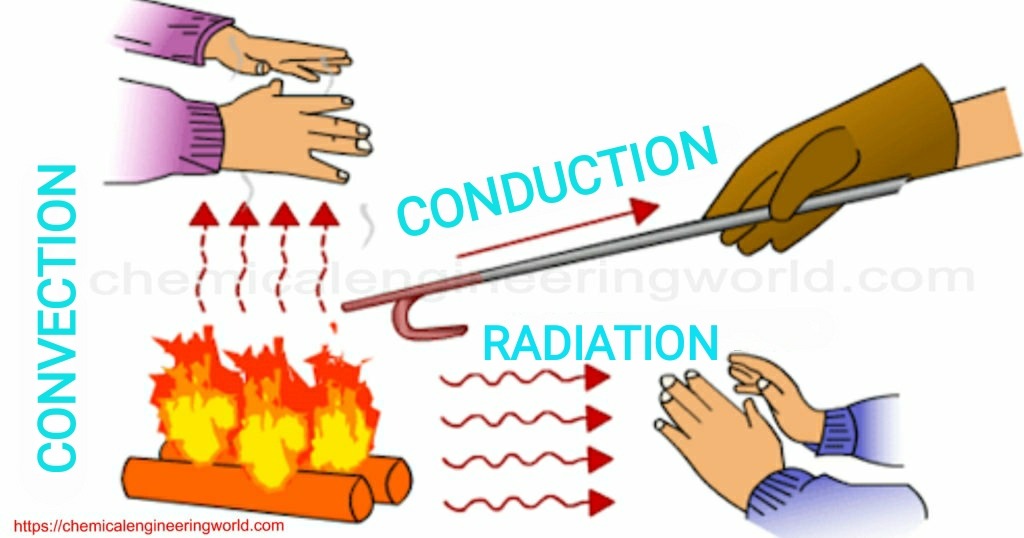The Invisible Force: Unveiling the Magic of Heat Transfer Operations
 Anand Rode
Anand Rode
The world around us is a constant dance of thermal energy, flowing from hot to cold. But how do we control this flow and utilize it for our benefit? Enter the fascinating realm of heat transfer operations, the unsung heroes behind countless industrial processes and everyday conveniences.
In this blog, we'll delve into the three fundamental modes of heat transfer and explore some of their most common applications:
1. Conduction: The Direct Touch
Imagine holding a hot mug. Heat from the mug (hotter object) conducts directly into your hand (colder object) through the physical contact. This is the essence of conduction – the transfer of thermal energy between objects in direct contact.
- Applications: Conduction plays a crucial role in everything from cooking food on a stovetop (pan conducts heat to the food) to transferring heat through building materials for insulation or heating purposes.
2. Convection: The Dancing Fluid
Have you ever observed boiling water in a pot? The heated water at the bottom expands, becomes less dense, and rises. Cooler water sinks, creating a circular flow – this is convection! Heat transfer occurs through the movement of fluids (liquids or gases) due to changes in density caused by temperature differences.
- Applications: Convection is a vital principle in various processes, from natural air circulation in buildings to forced convection using fans or pumps for efficient heating or cooling systems.
3. Radiation: The Silent Transfer
Unlike conduction and convection, radiation doesn't require any physical contact or medium. It involves the transfer of thermal energy through electromagnetic waves, similar to light or radio waves. This is why you can feel warmth from the sun even though there's no air in space!
- Applications: Radiation finds diverse uses, from food processing using infrared radiation to space exploration where spacecraft rely on radiators to expel excess heat.
Beyond the Basics: Optimizing Heat Transfer
Chemical engineers strive to optimize heat transfer efficiency for various applications:
Material Selection: Choosing materials with high thermal conductivity (like metals) allows for faster heat transfer compared to materials with low conductivity (like wood).
Surface Area: Increasing the surface area of a hot object enhances heat transfer by providing more area for contact or radiation. Think of the fins on a radiator!
Insulation: Conversely, we use insulators with low thermal conductivity to minimize heat transfer, keeping things hot or cold as needed. Imagine your trusty coffee mug keeping your beverage warm!
Heat Transfer in Action: Shaping Our World
Heat transfer operations play a vital role in countless aspects of our lives:
Chemical Reactors: Precise control of heat transfer is crucial for optimizing chemical reactions in reactors, ensuring efficient production of various chemicals.
Refrigeration and Air Conditioning: These systems rely on heat transfer principles to remove heat from a space for cooling or transfer heat to a space for warming.
Power Generation: From steam turbines in power plants to heat exchangers in nuclear reactors, efficient heat transfer is vital for energy production.
The Future of Heat Transfer: Innovation and Sustainability
The world of heat transfer is constantly evolving:
Nanomaterials: These innovative materials offer exceptional thermal properties, potentially leading to more efficient heat transfer processes.
Advanced Heat Exchangers: New designs and materials are being developed for more efficient and compact heat exchangers, reducing energy consumption.
Sustainability Focus: As sustainability gains prominence, focus is shifting towards utilizing renewable energy sources and optimizing heat transfer processes to minimize energy waste.
Heat transfer, though seemingly invisible, plays a critical role in shaping our world. From the comfort of your air-conditioned home to the life-saving drugs produced in chemical reactors, heat transfer operations quietly work behind the scenes. So, the next time you feel the warmth of the sun or enjoy the coolness of a refreshing beverage, remember the silent magic of heat transfer at play!
Subscribe to my newsletter
Read articles from Anand Rode directly inside your inbox. Subscribe to the newsletter, and don't miss out.
Written by
